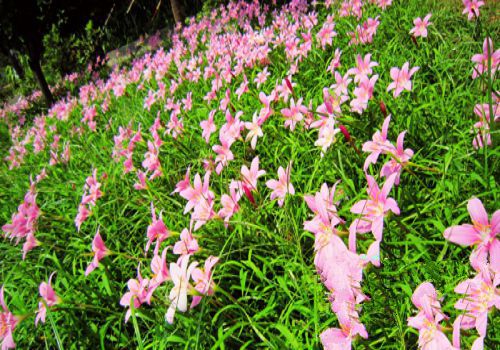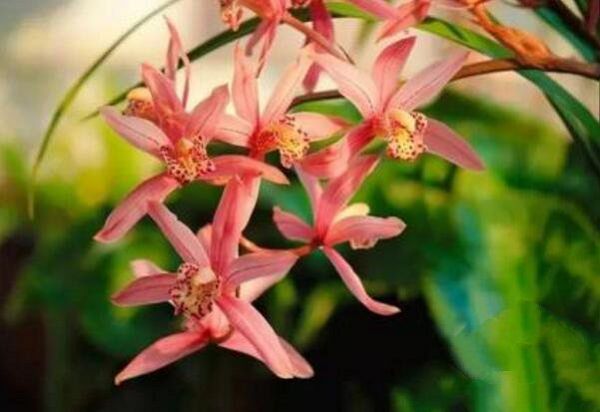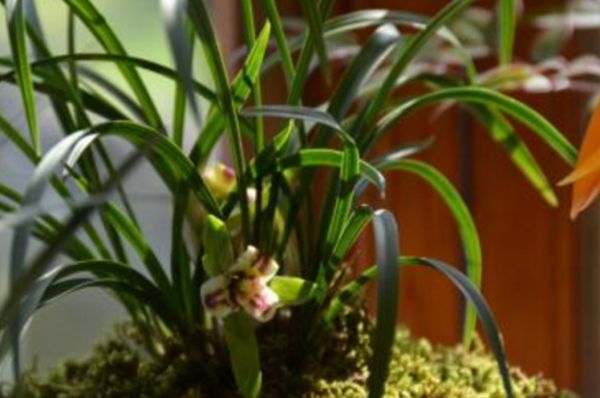How can orchids blossom?

How can orchids blossom?
I have planted orchids, but because the orchids are too proud, the environment required should be overcast and wet. Different seasons need different management methods? When you are busy with your work, it is easy to travel on business, so it blossoms in the first year and goes wrong if you don't pay attention to it in the second summer. Another is the water and temperature in winter and spring are the difficulties in the management of orchids. Or found a little bit from the Internet for your reference:
"three points of planting, seven points of cultivation", this is the ancient experience of orchid cultivation. Maintenance is related to whether orchids are luxuriant and blooming, so it is reasonable for predecessors to attach great importance to this. The methods of conservation and management of orchids are described in detail below.
I. place
The place where orchids are placed is very important, which directly affects the growth and development of orchids. Orchids are generally placed in the open field in spring, summer and autumn (shaded in the open field in summer) and indoors in winter. It is best to be open and moist outside. There should be plenty of light in the room, preferably facing south. In this way, it is beneficial for orchids to grow. The orchid basin had better be put on the wooden frame or table, not on the ground.
Second, shade
Orchids are mostly semi-negative plants, and most species are afraid of direct sunlight and need proper shade. Orchids can shine more sunshine to promote their growth in the first and middle of April. It should be properly shaded after late April. The varieties of erect leaves in Xialan and Qiulan had better be placed in the south of the shade so that they are properly exposed to more sunlight, while those with vertical leaves are better exposed to two hours of light every day. From June to September, you should cover the shade early every day. If you use Reed curtains, you can use dense curtains or two thin curtains. After October, the weather turns cool and the sun is weak, which can postpone shading, but we still need to pay attention to shading around noon.
Third, rainproof
Orchids can be caught in light rain, but to avoid mildew, showers or continuous rain. In the mildew and rainy season, especially to do a good job of rain prevention. From late June to mid-September, there are frequent showers. If it rains for a short time and the rainfall is small, it should be watered more in the evening to discharge the hot air in the basin, otherwise the orchid will be damaged or even withered. If the sun comes out again after the shower, it should be shaded in time to avoid the rising heat on the ground affecting the growth of orchids.
Rain Water's season coincides with the stage when orchids sprout leaf buds. If the pot soil is too warm, it will cause poor leaf bud growth or lead to diseases. At this time, you can sprinkle a small amount of plant ash to adjust the humidity of the basin soil.
Fourth, watering
The flower proverb says, "dry orchid and wet chrysanthemum", which has a certain degree of truth. Generally speaking, it is best for orchids to be eight minutes dry and two parts wet. If it is too wet, it is easy to make the flowers rot and die. The principle of watering should be: dry, wet, stop, properly dry. When mastering specifically, it should be paid attention to: in the growing period (the end of May-June), more watering should be appropriate, less watering should be appropriate in the budding period of leaves (about 3-4 months) and flowering period (about 3-4 months), and less watering or no watering should be done in the dormant period (winter). Those with large flowerpots and small orchid plants should be watered less, and those with small pots should be watered more. Hot and dry climate should be properly watered, cool and humid (such as mildew and rainy season, etc.) should be less or no watering. For orchids newly dug from the mountains, if there are few or more broken roots, they should be watered less to dry the pot soil, so that the roots will not rot and it is conducive to the emergence of new leaves.
Related
- Is the orchid suitable for indoor use? Is it good for the body?
- How to prevent the empty root of orchids?
- What to do after the crab claw orchid is withered?
- Why are the leaves of orchids always yellow? Fertilizing and watering.
- Can the root of the gentleman orchid be saved if it is rotten?
- Diagnosis and treatment of cotton-blowing beetle insects in Cymbidium
- There is a way for a gentleman's orchid to rot.
- What is the most suitable temperature and humidity for the orchid?
- How to raise a gentleman's orchid? Cultivation techniques of Cymbidium
- How to prepare the nutritive soil for the cultivation of Cymbidium



